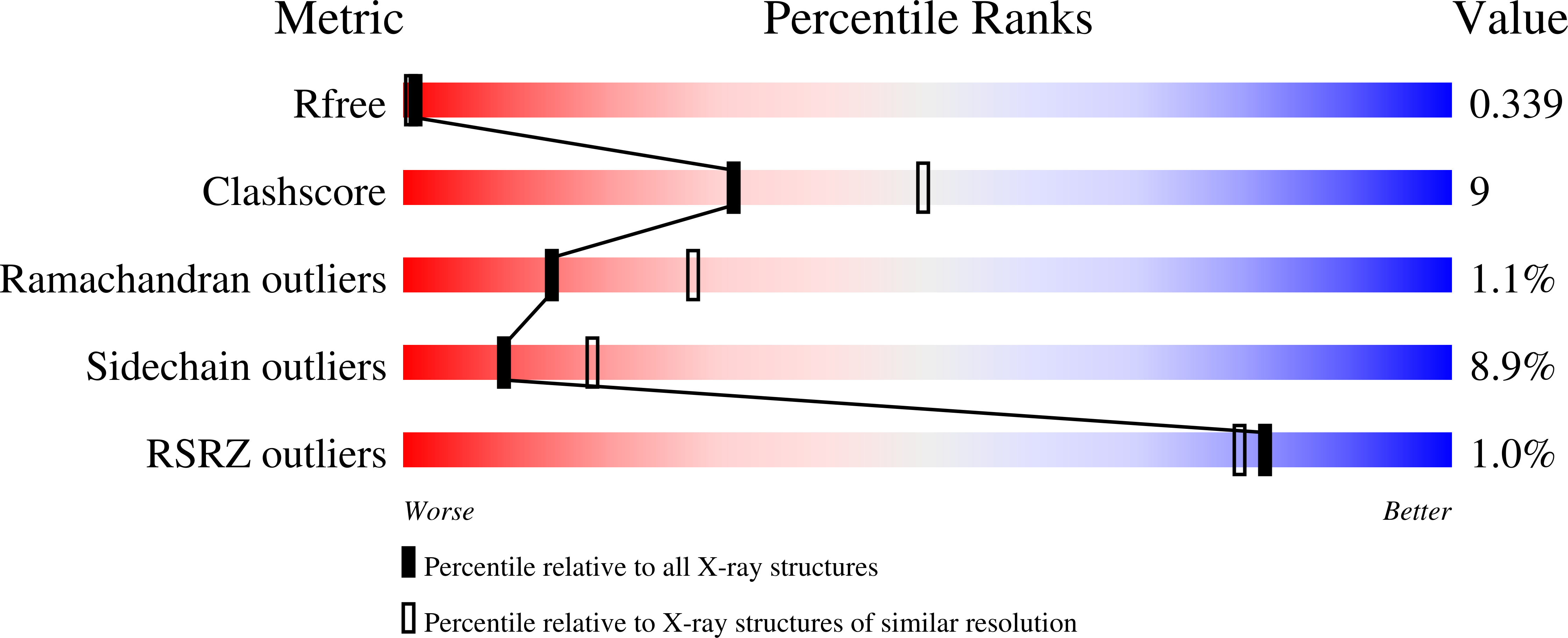
Deposition Date
2023-07-13
Release Date
2024-03-20
Last Version Date
2024-05-08
Entry Detail
PDB ID:
8TH5
Keywords:
Title:
Crystal Structure of the G3BP1 NTF2-like domain bound to the IDR1 of SARS-CoV-2 nucleocapsid protein P13L mutant
Biological Source:
Source Organism:
Homo sapiens (Taxon ID: 9606)
Severe acute respiratory syndrome coronavirus 2 (Taxon ID: 2697049)
Severe acute respiratory syndrome coronavirus 2 (Taxon ID: 2697049)
Host Organism:
Method Details:
Experimental Method:
Resolution:
2.62 Å
R-Value Free:
0.33
R-Value Work:
0.22
R-Value Observed:
0.23
Space Group:
P 1


